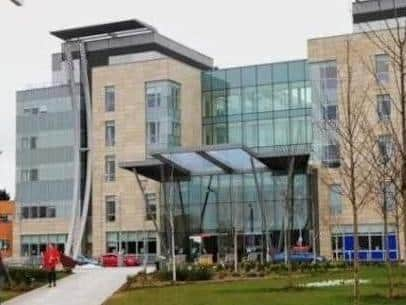Action needed to tackle 10 year life expectancy gap between Peterborough’s poorest and Cambridge’s richest
and live on Freeview channel 276
The Cambridgeshire and Peterborough Health Inequalities Strategy sets out a number of measures which it believes can help level up health services across the county which includes a more equal distribution of hospital staff.
Currently, hospital wards in Cambridge are said to be have greater staffing levels than at wards at Peterborough city and Hinchingbrooke hospitals.
Advertisement
Hide AdAdvertisement
Hide AdFor instance, an average 20-bed ward at hospitals run by the Cambridge University Hospitals NHS Foundation Trust is said to have 13 more doctors, six more consultants and 27 more nurses than an equivalent at hospitals run by the North West Anglia NHS Foundation Trust.


It is now being recommended that both trusts, as well as the Cambridgeshire and Peterborough NHS Foundation Trust and Royal Papworth Hospital NHS Foundation Trust, consider joint appointments.
According to the strategy there have been 7,933 excess deaths in Peterborough and Cambridgeshire between 2003 and 2018 due to social and economic inequalities - an average of nearly 530 a year.
Measures have now been proposed to help reduce this figure going forward, as well as narrowing the health inequalities between the poorest in Peterborough and richest in Cambridge.
These include:
Advertisement
Hide AdAdvertisement
Hide Ad. Establishing a Health Care System Inequalities Group to monitor and drive action on health inequalities
. Increasing the use of Health Inequality Impact Assessments (HIIAs)
. Addressing inequalities in workforce distribution
. Prioritising needs-based commissioning
. Allocating funding and care based on need rather than population
. Reducing inequalities in cardiovascular mortality, hypertension management (high blood pressure) and diabetes care.
Advertisement
Hide AdAdvertisement
Hide AdCurrently, a boy growing up in the poorest part of Peterborough has a life expectancy of 75.8 years, while a boy growing up in the richest part of Cambridge has a life expectancy of 85.2 years.
That gap has increased by 0.9 years from 2011 to 2017 - driven by early deaths in cardiovascular disease, cancer and respiratory conditions - and is expected to increase due to the coronavirus pandemic.
The proportion of people who have died from Covid-19 is twice as high in poorer areas than elsewhere, while those on the lowest incomes have also suffered more through housing and employment.
Among the disparities in health outcomes between the poorest and richest across Cambridgeshire and Peterborough are large gaps in premature cancer deaths and preventable mortality, as well as emergency hospital admissions.
Advertisement
Hide AdAdvertisement
Hide AdThe strategy has been developed by a local Health Inequalities Task and Finish Group Membership which included leading health officials from across the county and has received the backing of the Cambridgeshire and Peterborough Clinical Commissioning Group which is responsible for commissioning local health services.
A CCG spokesperson said: “As a system we are committed to doing all that we can to reduce health inequalities. We will work together to consider the recommendations made in the NHS health inequalities strategy including the recommendation made regarding the potential for joint appointments between different trusts.”